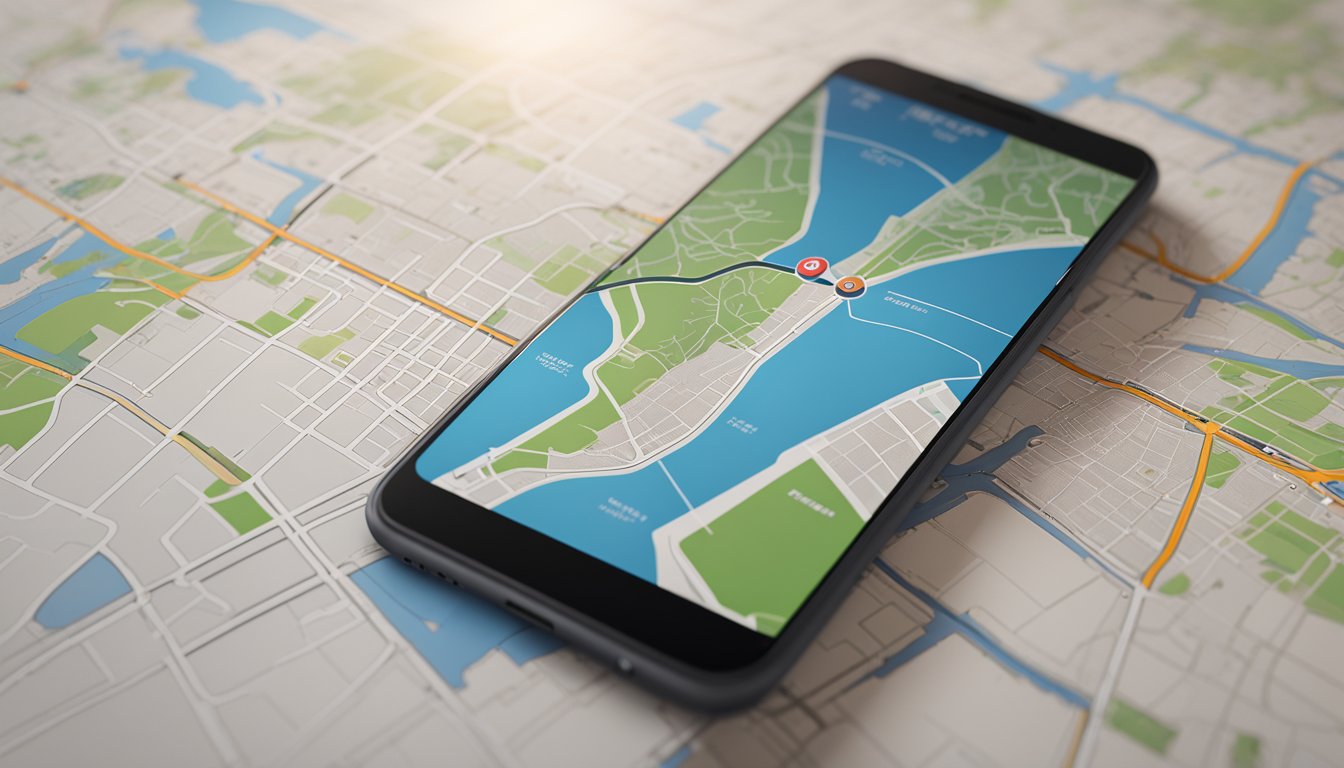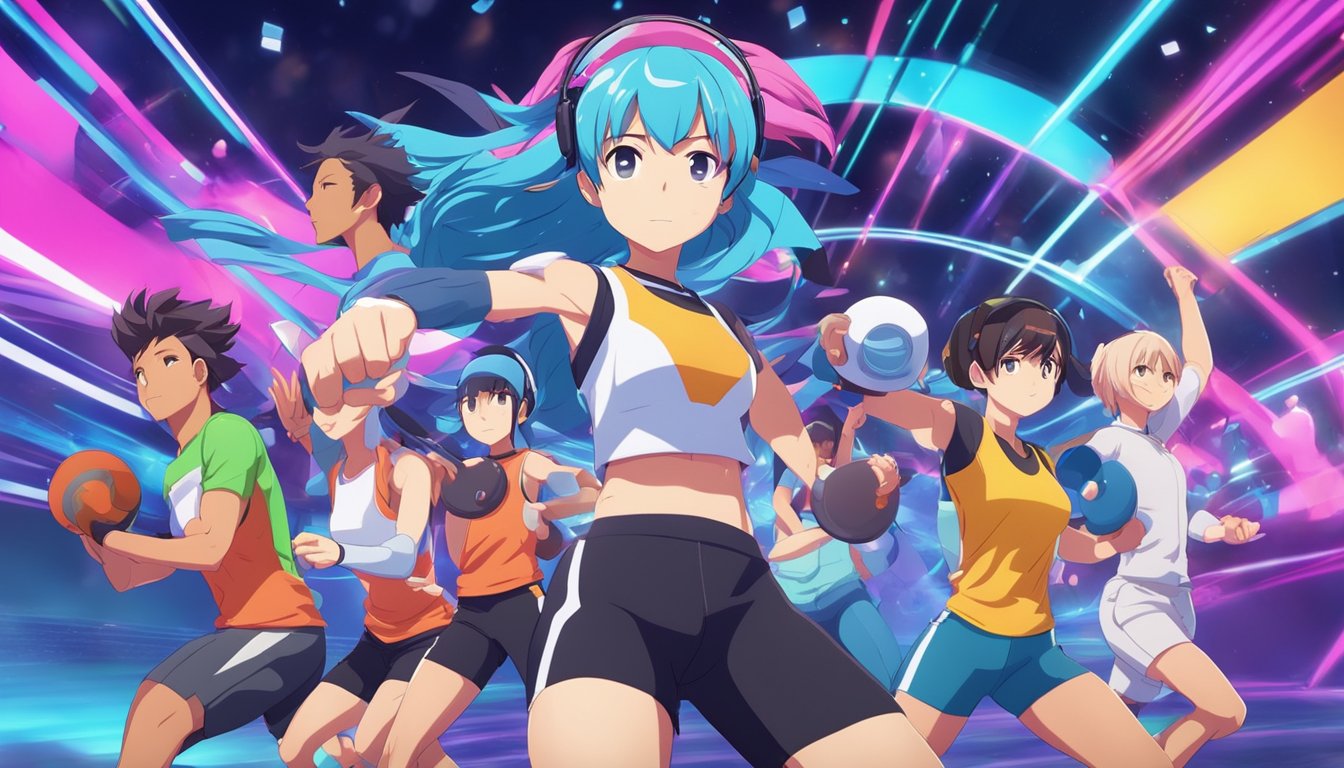Understanding the Mechanics of Fitness Games on Smartphones
If you plan to create your own mobile fitness app, let’s find oput how they work.
Leveraging Built-in Sensors for Activity Tracking
Your smartphone is a fitness hub. Use its sensors to track every move. Here’s how:
- Accelerometers gauge your steps and movements.
- Gyroscopes measure orientation and rotation.
- GPS tracks your runs and walks.
Accuracy matters. Ensure your app nails it. Smartphones aren’t perfect, but they’re getting there. Integrate wearables for even sharper data.
Sync with smartwatches and fitness trackers. Boost your app’s precision and user insights.
Community matters: let users share and compete. Build a network that motivates.
Remember, it’s not just about steps. Add nutrition tracking. Help users eat right and stay fit.
The Role of Accelerometers and Gyroscopes
Turn your phone into a fitness coach. Accelerometers and gyroscopes make it possible. These sensors detect your every move, transforming mundane activities into a game for fitness.
- Accelerometers: Track steps and detect movement speed. Shake your phone, and it’s like you never typed that mistake.
- Gyroscopes: Keep your world upright. Flip your phone sideways, and your gym game does too.
Accuracy matters: your fitness game needs to measure every step and spin correctly. Without it, users lose trust.
Combine these sensors with AI, and you’ve got a powerhouse. AI crunches numbers, making sense of the data. Your boxing fitness game for gym gets smarter, your workouts better.
GPS and Location-Based Fitness Challenges
Get ready to turn the world into your playground with mobile fitness games. GPS technology transforms ordinary workouts into thrilling quests. Imagine running through parks while dodging virtual obstacles or cycling on a path with real-time traffic updates.
- Track your steps, swims, or rides with precision.
- Compete in location-based challenges.
- Explore new routes with minimal fuss.
Embrace the outdoors and push your limits. With GPS, every step counts towards your fitness goals.
Designing Engaging Fitness Gaming Apps
Creating Fun and Engaging Exercise Routines
Dive into the world of fitness games mobile. Start with quizzes that grab attention. Make onboarding a fitness game, not a chore. Let users craft their profiles, setting goals that resonate with their fitness journey.
- Engaging quizzes for onboarding
- Customizable user profiles
- Video tutorials in exercise libraries.
Keep workouts fresh and exciting. Rotate exercises, mix in challenges, and sprinkle in achievements. Use animations and videos to guide every step. Make sure users nail the form and technique.
Keep motivation high with a variety of workouts. Instructional videos and clear guidance are key. Music that adjusts to workout intensity? Even better.
Track goals and progress with intuitive features. Celebrate every milestone. Encourage community interaction through shared achievements and group challenges. Send personalized notifications to fuel the fitness fire.
Integrating Challenges and Rewards
Keep users hooked with exciting challenges and tangible rewards. Break down fitness goals into bite-sized quests. Each victory brings a reward, each milestone, a badge. Here’s how:
- Set clear, achievable challenges. Start small, think big.
- Offer a variety of rewards. Points, badges, discounts, or real-world prizes.
- Track progress visually. Make success easy to see and feel.
Encourage users to push their limits. Celebrate every win, no matter how small.
Use gamification to turn sweat into satisfaction. Make every step count. Keep the game fitness fresh with regular updates. Add new challenges. Rotate rewards. Keep the excitement alive.
Ensuring Accessibility and Ease of Use
Make your fitness game app a breeze to use. Design for varying screen sizes to welcome all users. Here’s how:
- Keep it simple: Aim for minimalistic icons and clear navigation. Users should find what they need without hassle.
- Touch targets matter: Ensure buttons and interactive elements are easy to tap. No squinting or fumbling.
- Consistent experience: Whether on a phone or tablet, the app should feel familiar. Optimize for different devices and operating systems.
Focus on touch targets and placement. Your app’s usability skyrockets when users can interact effortlessly.
Remember, ease of use keeps users coming back. Prioritize it from the start.
Incorporating Gamification into Fitness Apps
Utilizing Badges, Rewards, and Leaderboards
Boost your app’s appeal with gamification. Turn workouts into thrilling quests. Reward users with badges for each milestone. Climb the leaderboards by burning calories and completing challenges. Make every sweat count!
- Badges: Celebrate every victory. From first 5k run to 100th push-up, badges mark the triumphs.
- Rewards: Unlock perks and features. Keep users coming back for more.
- Leaderboards: Spark friendly competition. See who tops the charts each week.
Keep it simple yet addictive. Design a system that hooks users from the get-go. Make them crave their next achievement.
Encourage sharing on social media. Let users flaunt their badges and leaderboard positions. Turn their progress into viral stories. Drive organic growth through user pride and community spirit.
Maintaining User Engagement Through Progress Tracking
Keep users hooked with real-time progress tracking. Show them how far they’ve come and what’s next. Use these features:
- User profiles: Tailor the experience. Let users set goals and see their journey unfold.
- Goal setting: Make it simple. Users should easily set and edit their fitness milestones.
- Performance data: Visualize success. Charts and graphs turn numbers into motivation.
- Social sharing: Celebrate victories. Enable users to flaunt their achievements.
Consistent feedback loops are key. They transform routine into triumph.
Push notifications are your ally. Customize them to match user goals and keep the fire alive. Gamify the grind. Badges and rewards aren’t just shiny; they’re mile markers on the path to fitness.
Designing for User Acquisition and Retention
Keep users coming back for more. Design your NFL fitness game to hook players from the start. Use engaging quizzes during onboarding to make a great first impression. Allow deep customization of user profiles. Users should feel the app is theirs, tailored to their fitness goals and preferences, even if we speak about a VR horny fitness game.
Make every interaction count. Integrate gamification elements like badges, rewards, and leaderboards. These features not only add fun but also drive competition and motivation. Remember, a user engaged is a user retained.
Monetize smartly. Choose a monetization strategy that supports your user acquisition and retention goals. Combine different models, like ads for free users and ad-free experiences for subscribers. Keep the user experience at the forefront of your monetization efforts.
Keep it simple, keep it fun, and keep it personal. That’s the mantra for designing Beyonce fitness games for exercises that users won’t just download but will use day after day.
Geolocation for Better Fitness Experiences
Implementing Location-Based Exercises
Get your users moving with location-based exercises. Use geolocation to create dynamic routes. Users will know the best paths and traffic conditions. They’ll see their progress in real time.
- Track steps, cycles, swims with GPS data.
- Share workout maps with the community.
- Calculate insights to motivate users.
Make every workout an adventure. Turn neighborhoods into gaming zones. Let users collect items or avoid obstacles as they exercise.
Incorporate adaptive adjustments based on performance. Offer timely instructions to optimize workouts. Keep users engaged with a personalized touch.
Encouraging Exploration and Outdoor Activities
Get outside and make your workout an adventure. Use GPS and mapping integrations to track your runs, hikes, and rides with precision. Sync your health data for a full fitness picture and tailored advice.
- Set goals and smash them. Track your progress every step of the way.
- Join events like the Summer Sculpt Blitz or Empower Your Journey. Just 7 minutes a day can transform your summer or support a cause.
- Connect with others. Share victories, join groups, and tackle challenges together.
Stay on top of trends. Keep your app fresh with the latest in fitness tech and community features.
Celebrate every milestone. Boost morale and stay motivated with recognition for your achievements. The journey to health is ongoing, and your app is your steadfast companion.
Design Considerations for Geolocation Features
Keep it simple and intuitive. Your users want to open the app and get moving. Make sure your geolocation features are easy to access and understand. No one should need a manual to start their workout.
- Accuracy is key. Ensure GPS integration is spot on. Users rely on this data to track their progress and achievements.
- Privacy matters. Always ask for permission before accessing location data. Be transparent about how you use it.
- Battery life counts. Geolocation can drain batteries. Optimize your app to minimize power consumption.
With geolocation, offer real-time updates on paths, traffic, and estimated times. This keeps users informed and safe during their activities.
Consider the environment. Urban users may face different challenges than those in rural areas. Tailor your app’s geolocation features to adapt to various settings. This way, you cater to a wider audience and enhance the user experience.
Social Connectivity in Fitness Games
Building Communities Through Challenges and Teams
Connect with others and forge strong teams. Use challenges to spark competition and camaraderie. Here’s how:
- Start with icebreakers to get everyone comfortable.
- Set up team challenges that encourage collaboration.
- Use tools like video calls and project management software for seamless communication.
Keep it fun and maintain an upbeat work atmosphere.
Celebrate milestones together. Boost morale and motivation by recognizing achievements. Stay agile and adapt to new trends in the fitness app sector.
Integrating Social Media for Motivation and Support
Connect and flaunt your fitness milestones on social media. Share your success and watch the likes roll in. This isn’t just about showing off; it’s smart marketing. Your friends see your progress, get inspired, and hey, they might just download the app too.
- Track and boast: Log your workouts, set goals, and share your achievements.
- Join the community: Connect with fellow fitness enthusiasts, join groups, and tackle challenges together.
- Stay on the ball: Get personalized notifications to keep your motivation sky-high.
Your fitness journey becomes a shared adventure. Inspire and get inspired.
Social features in fitness apps aren’t just add-ons. They’re the glue that binds users, creating a community that thrives on mutual motivation. Connect, compete, and celebrate together. It’s not just an exercise game; it’s a lifestyle shift.
Competitive Features and Real-Time Feedback
Crush your fitness goals with real-time feedback and competitive features. Stay ahead of the fitness game ideas with AI-driven insights. Get instant tips on form, pace, and intensity. Here’s how:
- Adaptive adjustments keep your workouts fresh. Your app learns from your performance and tweaks your routine.
- Movement analysis ensures you’re exercising right. Avoid injuries and maximize gains with AI’s watchful eye.
- Goal setting keeps you focused. Track your progress and celebrate every win.
- Social features connect you with fellow fitness enthusiasts. Share your triumphs and join forces in challenges.
Stay motivated with personalized push notifications. They cheer you on and remind you of your targets.
These features are not just about keeping score. They’re about making your fitness journey enjoyable and effective. Dive into an Unreal fitness game that adapts to you, supports your goals, and connects you with a community that shares your passion for health.
Personalizing the Fitness Gaming Experience
Custom Workout Plans and Adaptive Feedback
Tailor your fitness journey with custom workout plans that adapt to you. Your app should learn from your performance and tweak routines for the best results. Think of it as a virtual coach in your pocket, offering real-time feedback and adjustments.
- Adaptive adjustments based on your feedback
- Real-time instructions for optimal load and motivation
- Movement analysis for technique improvement.
Your fitness app isn’t just a tool; it’s a personal trainer that evolves with you.
AI isn’t just a buzzword; it’s the backbone of personalized fitness. It analyzes your data, from goals to performance, and crafts workout plans just for you. Get the right exercises, sets, reps, and rest—all tailored to your capabilities.
User Performance Analysis and Improvement Tips
Track your progress with precision. Use real-time feedback to adjust your workouts on the fly. Analyze your performance data to spot trends and areas for improvement.
Keep it simple. Focus on key metrics that reflect your fitness goals.
Here’s how to get started:
- Set up your app for performance analysis. Ensure accurate, repeatable results.
- Personalize your recommendations. Use AI analytics to tailor workout plans.
- Engage with quizzes and detailed profiles to refine your fitness journey.
Remember, your app’s success hinges on user satisfaction. Prioritize quality and support to meet performance benchmarks and exceed expectations.
Accounting for Individual Fitness Levels and Preferences
Your fitness game for kids must cater to everyone. Make it personal. Users crave workouts tailored to their needs. Start with easy profile creation. Keep it simple. Let users input age, gender, physical condition, and exercise level.
- Offer customization. Let them set goals, choose exercises, and track progress. Personalization keeps users coming back.
- Incorporate adaptive adjustments. Use feedback to optimize workouts. Adjust intensity and reps to keep users motivated.
- Embrace technology. AI can craft individual training programs. Human pose estimation can analyze and correct movement.
Remember, a one-size-fits-all approach doesn’t work. Your app should adapt to each user’s unique journey.
Launching and Maintaining Your Fitness Game App
Deployment Strategies for App Stores
Hit the ground running with your fitness game app by mastering the app store deployment process. Get your app out there by uploading it to your chosen app stores. Stick to their rules and nail the submission guidelines to avoid hiccups.
- Prepare your app’s metadata, including a catchy title, description, and keywords.
- Ensure your app’s compatibility with different devices and platforms.
- Test rigorously to squash bugs and enhance performance.
Keep a close eye on user feedback post-launch. Use it to refine and update your app, keeping it fresh and functional.
Don’t just launch; promote! Craft a savvy marketing strategy. Think influencer partnerships, digital marketing, and social media buzz. Remember, it’s not just about being in the store; it’s about standing out.
Ongoing Maintenance and User Support
Keep your computer fitness game in top shape with regular maintenance and user support. Address issues fast and keep users happy. Here’s how:
- Monitor performance regularly to spot and fix bugs swiftly.
- Update content to keep workouts fresh and engaging.
- Gather user feedback to guide improvements and new features.
Your app’s success hinges on a solid support system. Make it robust.
Stay ahead with a proactive approach. Anticipate user needs and act on them. Ensure a seamless experience that keeps players coming back for more.
Regular Updates and Feature Enhancements
Keep your fitness app fresh and exciting. Roll out new features regularly to keep users hooked. Listen to their feedback. What do they love? What can improve? Make those changes swiftly:
- Added a friends list
- UI updates
- Improved pace tracking
- Fixed bugs.
Your app’s success hinges on its ability to evolve. Stay ahead of the curve.
Stay transparent with your updates. Let users know what’s new and fixed. Check out the ‘What’s New’ section in app stores for examples. Encourage users to leave reviews. Their input shapes your app’s future.
Navigating the Business of Fitness Gaming Apps
Understanding the Fitness App Market
Dive into the fitness app market and you’ll find a goldmine of opportunities. Know your audience and the types of apps they crave. Fitness enthusiasts look for apps that track progress, offer personalized routines, and integrate with their lifestyle.
Monetize smartly. Consider in-app purchases, subscriptions, and ads. But balance is key. Prioritize user experience to keep them coming back.
Stay ahead of the curve. Watch for trends like social sharing and wearable tech integration. These features transform workouts and keep users engaged.
Innovation drives the fitness app market. Offer something fresh, and you’ll capture attention in this competitive space.
Monetization Models and Cost Considerations
Think profit from day one. Choose a monetization strategy that aligns with your app’s goals. Combine different models for maximum revenue. Consider ads for free users, subscriptions for premium features, and in-app purchases for exclusive content.
- Subscription Model: Access to exclusive content and features.
- In-App Purchases: Sell virtual goods or special workouts.
- Advertisements: Targeted ads based on user data.
Costs matter. Keep development and maintenance costs in check to ensure your fitness app remains a viable business. Balance monetization with user experience to keep your app competitive and appealing.
Strike the right balance between making money and providing value. Your users will thank you.
Best Practices for Fitness App Developers
Keep it simple and intuitive. Your app’s design should guide users effortlessly. Aim for minimalistic icons and easy navigation. Users should find what they need without confusion or delay.
Engage through interactivity. Make every touchpoint in your app an opportunity for user engagement. Interactive elements keep users coming back.
Focus on usability. The app must be user-friendly and responsive to keep the user’s interest alive.
Analyze feedback for growth. User feedback is gold. Collect it, study it, and use it to enhance your app continuously. Pay attention to what users love and what they don’t.
Support is key. Provide reliable technical support. Users appreciate quick and helpful responses to their issues.
Exploring Advanced Technologies in Fitness Gaming
Augmented Reality and Immersive Workouts
Step into the future of fitness with augmented reality (AR). Transform your living room into a virtual gym. Dodge obstacles in your park that’s now a digital playground. AR makes workouts thrilling, turning the mundane into a gym fitness game.
- Engage more muscles with interactive challenges.
- See progress in real-time with expressive displays.
- Stay motivated by blending physical exercise with gaming fun.
With AR, every workout is a new adventure. Your environment, your rules.
Even the best PC3 fitness games are not the same. They’re not just about swiping and tapping anymore. Get up, move, and interact. Run, jump, and earn rewards in virtual worlds. Pick your zumba fitness game songs list for better experience. Your smartphone is the gateway to an immersive fitness journey. And remember, your Meta Quest 3 is not just a gadget; it’s your ticket to a fitter you.
The Impact of AI on Personalized Fitness
Imagine your fitness app knows you better than you know yourself. AI transforms fitness apps into smart coaches. Get workouts tailored just for you, with AI analyzing your goals and performance. No more guesswork. Just results.
- Personalized workout plans
- Adaptive training recommendations
- Real-time performance adjustments
AI doesn’t just track your progress. It anticipates your needs, making every session count.
AI’s impact doesn’t stop at workouts. It extends to diet plans, integrating data from other wellness apps. Your fitness journey, now smarter and more connected. Embrace the AI revolution in fitness and stay ahead of the interactive fitness game.
Future Trends in Fitness Gaming Technology
Fitness gaming is not just a fad; it’s the future. Expect immersive experiences that blend physical activity with cutting-edge tech. Think beyond the screen. Augmented Reality (AR) will bring workouts to life, making every session an adventure.
- AI-driven personalization will tailor workouts to your needs, pushing you harder and smarter.
- Social features will evolve, connecting you with friends and fitness buffs worldwide.
- Holistic wellness will be a focus, integrating mental health into your fitness journey.
Fitness gaming on mobile is set to revolutionize how we think about exercise. It’s not just about the sweat; it’s about the experience.
Stay ahead of the curve. Keep an eye on these trends to ensure your VR fitness game remains relevant and engaging. The digital transformation of fitness is here, and it’s thrilling.
Answering Common Questions About Fitness Gaming Apps
Addressing Concerns and Curiosities
Got questions about fitness gaming apps? You’re not alone. Fitness games for XBox 360 are changing, and it’s natural to have queries. Let’s tackle them head-on.
- User Privacy: Your data stays safe. Apps must comply with strict privacy laws.
- Personalization: Set your own targets. Tailor your experience to your goals.
- Accessibility: Everyone should play. Design focuses on ease of use for all.
Exercise impacts both physical and mental health. Gamification makes it fun and keeps you coming back for more.
Curious about the tech? Fitness apps use the latest to keep you engaged. Think AR, AI, and more. Stay tuned for what’s next in the world of fitness gaming.
Providing Tips for Optimal App Usage
Get the most out of your fitness game app with these easy tips:
- Set realistic and specific goals to stay on track.
- Follow the app’s instructions and feedback closely.
- Regularly check your progress and adjust your goals as needed.
- Ensure your app respects data privacy and follows health privacy laws.
- Keep the app updated and listen to user feedback for improvements.
Use gamification to your advantage. Points, levels, and rewards can boost motivation and satisfaction.
Avoid overwhelming users with too many notifications. Balance is key to maintaining user interest without causing frustration. Act on user feedback and refine your app to enhance the experience continuously.
Sharing Success Stories and User Testimonials
Hear it from those who’ve been there. Real people, real results. They’ve shared their journeys, and now it’s your turn to be inspired. Check out these snapshots of success:
- Title: Success Stories – MyFitnessPal Community
- Snippet: Welcome to our community! This forum category, Success Stories, is for members to update your progress, share success stories and celebrate your victories.
Your 2D fitness game could be the next big motivator. Imagine users celebrating milestones, cheering each other on, and achieving more together.
Connect, share, and interact. That’s the power of community in fitness gaming. Celebrate every milestone and keep pushing the envelope. Stay ahead with the latest trends and make your app a part of users’ success stories.













